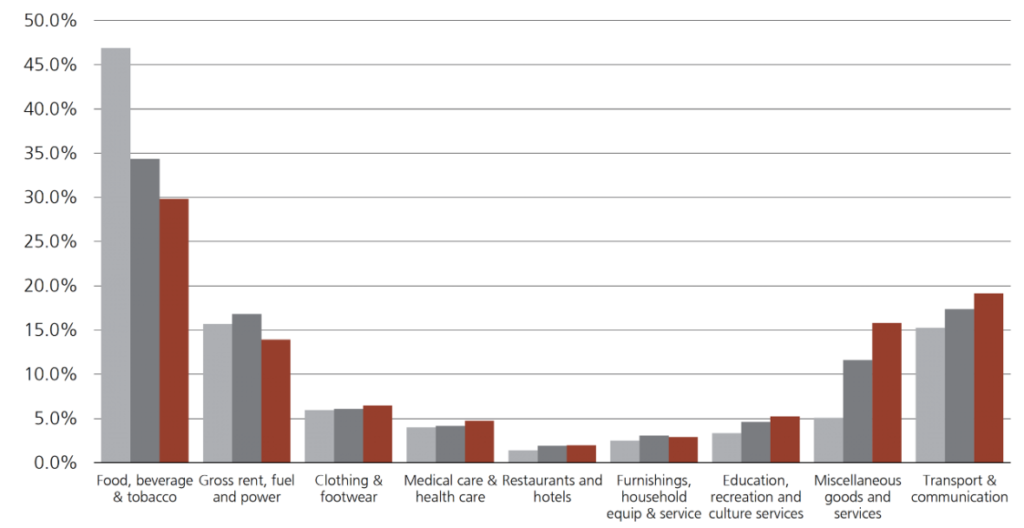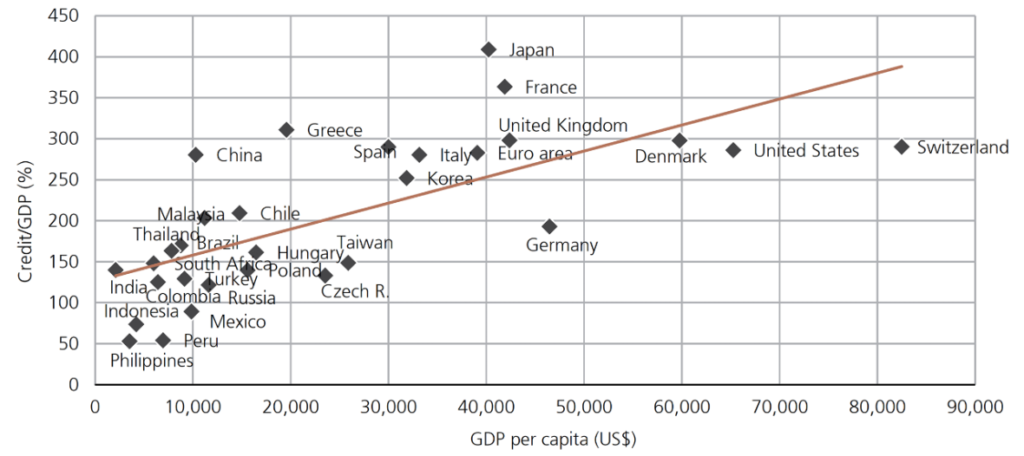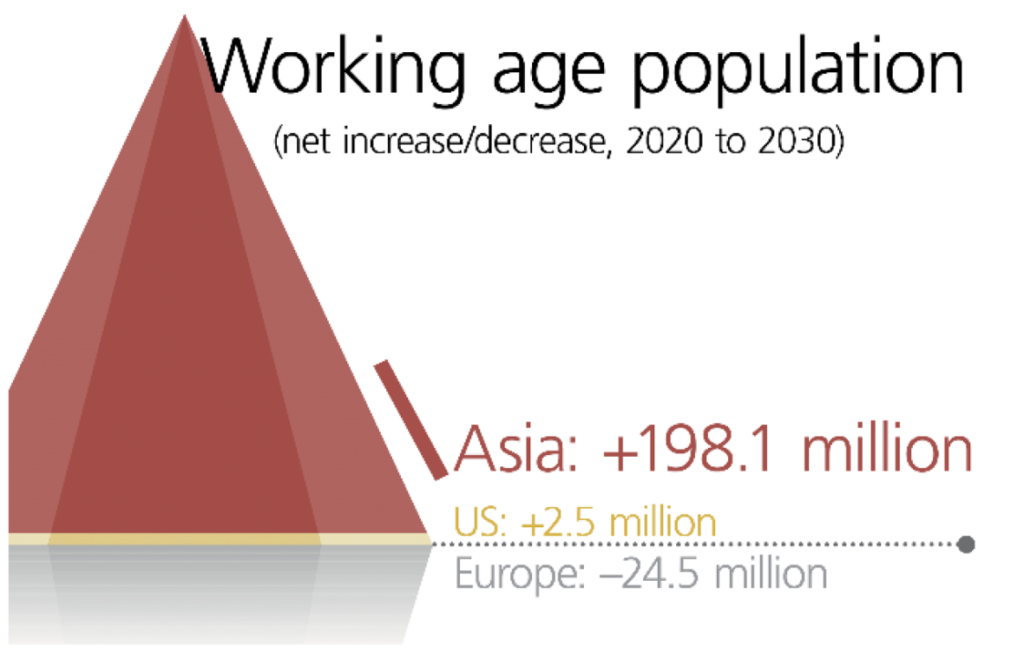Asia equities expert Shou-Pin Choo, Portfolio Manager in the Emerging Markets and Asia Pacific Equities Team, answers the questions that are high on investors minds.
What are the most attractive themes in Asia?
There are a number of themes in Asia that we believe will provide secular growth drivers. One of the themes is the change in consumption patterns as Asian economies develop. So what does it mean? Basically, as economies develop, where and how consumers spend their money will change.
Look at the change in wallet share in India. Twenty years ago, half of consumption expenditure went on basic items like food, beverages and tobacco; now the structure is around 30% for these basic items, with more spending going into things like education, transport, and communications services.
How are consumer habits changing?
As consumers become more affluent, even within the same product category, we can see a very clear and discernible trend that consumption patterns are moving from basic functional brands to premium brands.
Look at the consumption of Baijiu, a liquor made in China, over the past few years. Overall consumption growth is expected to be relatively flat, but sales of premium brands are expected to grow at mid-teen rates.

Shou-Pin Choo is a Portfolio Manager and Technology sector Analyst within the Global Emerging Markets and Asia Pacific Equities team.
He is a member of the Global Emerging Markets Strategy Committee and is based in Singapore. Shou-Pin is also the research coordinator for Asia ex-Japan. Prior to joining UBS Asset Management in 2000, Shou-Pin managed Asian equities at AIB Govett in Singapore. His previous industry experience includes positions as a central dealer and performance measurement specialist.
India's change in wallet share (2000 – 2019)

Source: CEIC, JP Morgan, as of August 2020
The consumer is changing, and the chart shows the trend of movement towards premium brands from more basic functional needs. A diversifying consumer base with diverse needs.
Let’s also look at e-commerce
Digital transformation is taking place across many industries. In the case of retail, one can see that e-commerce penetration is increasing. In some parts of the world the trend has been accelerating faster than markets such as the US. There are countries still relatively less penetrated, like India and Indonesia, but we expect they will catch up.
As economies develop, so do financial markets, but credit as a percentage of GDP is still relatively low in a lot of Asian countries. Now that means when the economies develop, the credit market will likely grow faster than GDP.
Total Credit/GDP vs. GDP per capita

Source: Total Credit/GDP from BIS, as of 2Q20. For Peru, Taiwan and Philippines, using Loans/GDP as proxy. JP Morgan, as of November 2020.
Credit as a percentage of GDP is still relatively low in a lot of Asian countries. This means that when the economies develop, the credit market is likely to grow faster than GDP.
If you can find banks that are taking market share, you may find good investment candidates. Good banks are actually quite visible because a lot of the time private sector banks gain market share at the expense of state-owned banks because they don’t have the burden of legacy and policy loans.
We are also quite excited about the semiconductor sector, which has been consolidating. The most advanced manufacturing assets are actually located in Asia. The majority of semiconductor manufacturing assets are also located in Asia, such as in South Korea, Taiwan, China, and in Singapore.
So you can find good investment candidates for the semiconductor sector in Asia. That’s because China will likely be investing aggressively to try to catch up, and at the same time you can also already invest in global leaders in places like South Korea and Taiwan.
Why shouldn't investors ignore Asia?
We all know that GDP growth in Asia in the long run has been much stronger and is expected to continue to be much stronger than the EU and US.
We know Asia is large, but as a reminder of the scale, Asia’s population of 4.65 billion dwarfs the other regions. And, of course, this consists of three major population centers.
We have China and India, each with a billion people, but ASEAN (Association of Southeast Asian Nations) itself has 670 million people, so roughly the same size as the population of Europe.
“If the authorities are able to control the COVID-19 situation, it may see double digit growth in FY2022 after two years of weak growth, especially coming from a low base.”
More of the world’s production and consumption has to take place in Asia. If we look at the number of billionaires in Asia, it exceeds that of the US and Europe, so spending power has grown tremendously and will likely continue to grow.
If we look not just at the population, but within that the working age population, we find that over 100% of the world’s workers for the foreseeable future will be coming from Asia. So particularly in the fast growing populations of India and ASEAN.

Source: UN World Population Prospects, 2019. Note: 1. Working age population is defined as people aged between 15 to 64 years of age. 2. Projects are based on forecast by the United Nations using a ‘constant-fertility’ scenario for the chosen time period.
If we look not just at the population, but within that the working age population, we find that over 100% of the world’s workers for the near future will be coming from Asia. Growth in the working population in the rest of the developed markets overall is either flat, as in the case of the US, or shrinking, as in the case of Europe.
Growth in the working population in the rest of the developed markets overall is either flat, as in the case of the US, or actually shrinking, as in the case of Europe. So more of the world’s production and consumption has to take place in Asia.
There are more patents filed in Asia, China, Japan, Korea, and Taiwan, than in the US and Europe combined. We are also seeing R&D spending exceed the US and Europe.

